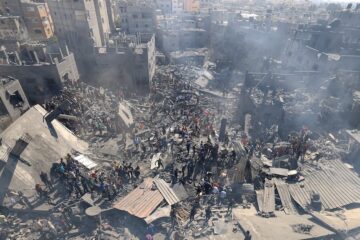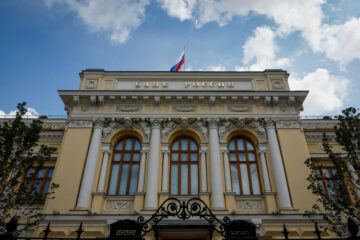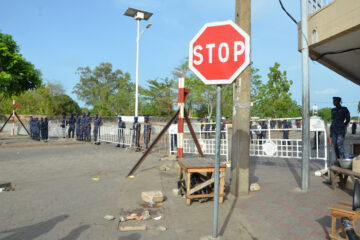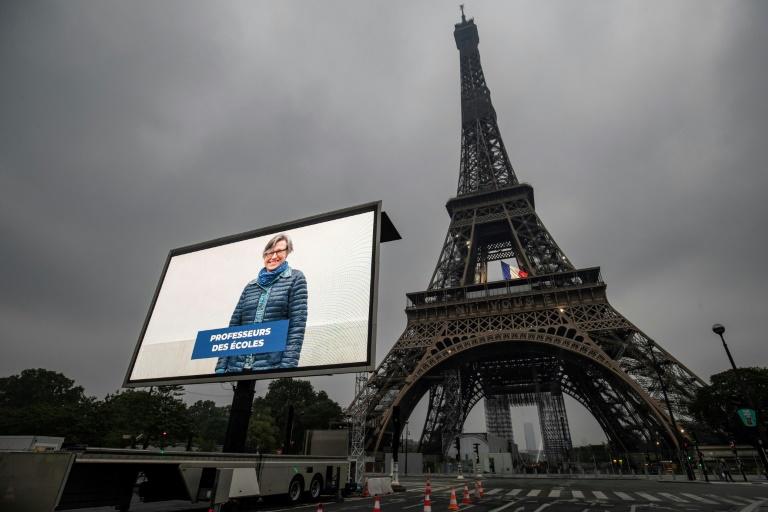Russia says it pulls back some troops, Ukraine and West want proof
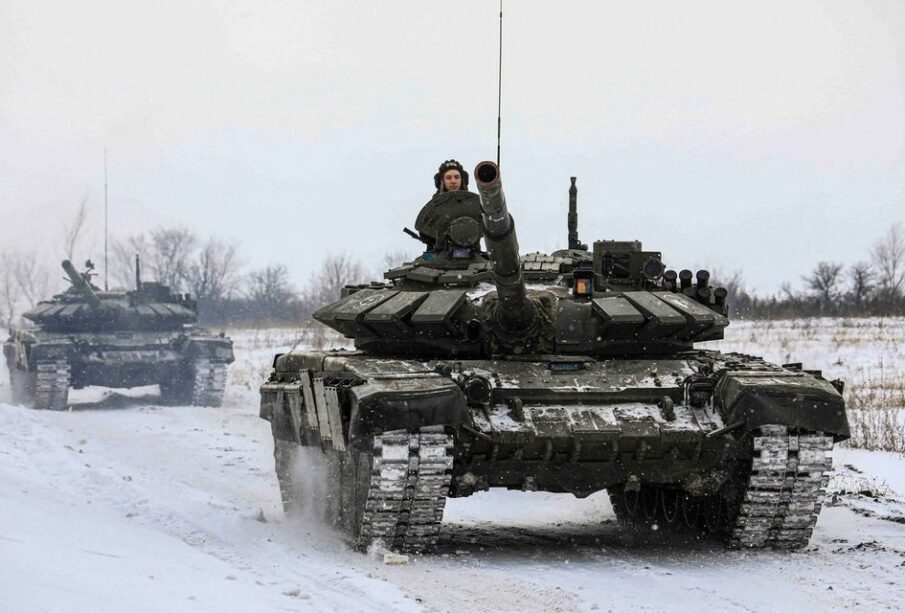 Russian servicemen drive tanks during military exercises in the Leningrad Region, Russia, in this handout picture released February 14, 2022. Russian Defence Ministry/Handout via REUTERS/File Photo
Russian servicemen drive tanks during military exercises in the Leningrad Region, Russia, in this handout picture released February 14, 2022. Russian Defence Ministry/Handout via REUTERS/File PhotoRussia said on Tuesday some of its troops were returning to base after exercises near Ukraine and mocked Western warnings about a looming invasion, but NATO and the United States said they had yet to see any evidence of a de-escalation that could avert war.
President Vladimir Putin said Russia was ready to keep talking to the West about security issues but would not be satisfied with vague talk that Ukraine would not be ready to join NATO any time soon.
The military announcement marked the first sign from Moscow that it may be ready to reverse a build-up of some 130,000 troops near its border with Ukraine, which has triggered one of the deepest crises in East-West relations since the Cold War.
Tensions remained high, but German Chancellor Olaf Scholz said after meeting Putin in the Kremlin that the withdrawal of some Russian forces was a good sign.
Moscow did not say how many units were being withdrawn, and how far. The U.S. ambassador to the United Nations said Washington had not seen evidence of any pullback yet.
Ukraine said the reported pullback needed to be seen to be believed. British Prime Minister Boris Johnson said “the intelligence that we’re seeing today is still not encouraging”.
The Ukrainian Centre for Strategic Communications and Information Security said the country’s defence ministry and banks Privatbank and Oshadbank had come under cyber attack.
“It is not ruled out that the aggressor used tactics of little dirty tricks because its aggressive plans are not working out on a large scale,” said the centre, without specifying who the aggressor was.
DIPLOMATIC SIGNALS
NATO’s chief welcomed signals from Russia in the past two days that it may be looking for a diplomatic solution but urged Moscow to demonstrate its will to act.
“There are signs from Moscow that diplomacy should continue. This gives grounds for cautious optimism. But so far we have not seen any sign of de-escalation on the ground from the Russian side,” NATO Secretary-General Jens Stoltenberg told reporters.
He said Russia often left military equipment behind after exercises, creating the potential for forces to regroup.
At a joint news conference with Scholz, Putin referred only briefly to the troop moves and did not go into details.
Russia has always denied planning to invade Ukraine, saying it can exercise troops on its own territory as it sees fit. It has been pressing for a set of security guarantees from the West, including a guarantee that Ukraine will never join NATO.
Putin told reporters Russia would not be satisfied with talk that the former Soviet republic was not ready to join any time soon and was demanding that the issue be resolved now.
“As for war in Europe…about whether we want it or not? Of course not. That is why we put forward proposals for a negotiation process, the result of which should be an agreement on ensuring equal security for everyone, including our country,” he said.
Scholz said the diplomatic possibilities were far from exhausted.
“For us Germans but also Europeans, sustainable security can only be reached .. with Russia. Therefore it should be possible to find a solution. No matter how difficult and serious the situation seems to be, I refuse to say it is hopeless,” he said.
In a separate development, Russia’s lower house of parliament voted to ask Putin to recognise two Russian-backed breakaway regions in eastern Ukraine as independent.
Recognition of the self-declared Donetsk and Luhansk People’s Republics could kill off the Minsk peace process in east Ukraine, where a conflict between government forces and Moscow-backed separatists has killed 15,000 people.
Asked about the move, Putin said the regions’ problems should be solved on the basis of the Minsk agreements, which were signed in 2014 and 2015 but have never been implemented. Scholz said all sides should stick to those accords.
“COULD BE IMMINENT”
Russia’s show of force near Ukraine’s borders has prompted months of frantic Western diplomacy and drawn threats of severe sanctions if it invades, culminating in a crescendo of U.S. and British warnings in recent days that this could happen at any time.
The Kremlin sought to portray its moves as proof that Western talk of war had been both false and hysterical.
“February 15, 2022 will go down in history as the day Western war propaganda failed. Humiliated and destroyed without a single shot fired,” Foreign Ministry spokeswoman Maria Zakharova said.
Russia’s defence ministry published footage showing tanks and other armoured vehicles being loaded onto railway flatcars. But Western military analysts said they needed more information to judge the significance of the latest troop movements.
Konrad Muzyka, director of the Poland-based Rochan consultancy, told Reuters it would take several days to verify the latest moves via satellite imagery.
“It should also be noted that new trains with equipment from Central Russia keep on arriving near the border and that Russian forces continue to move towards staging areas,” he said.
Commercial satellite images taken on Sunday and Monday showed a flurry of Russian military activity at several locations near Ukraine, including large deployments of troops and attack helicopters, and warplanes moving to forward locations.
Russian shares, government bonds and the rouble, which have been hit by fears of impending conflict, rose sharply as the situation seemed to ease slightly, and Ukrainian government bonds rallied. Oil dropped more than 3% from a seven-year high reached on Monday.
SOURCE: REUTERS

